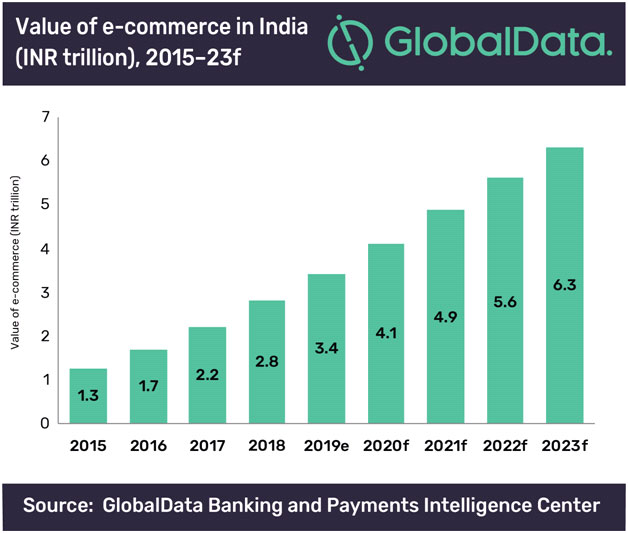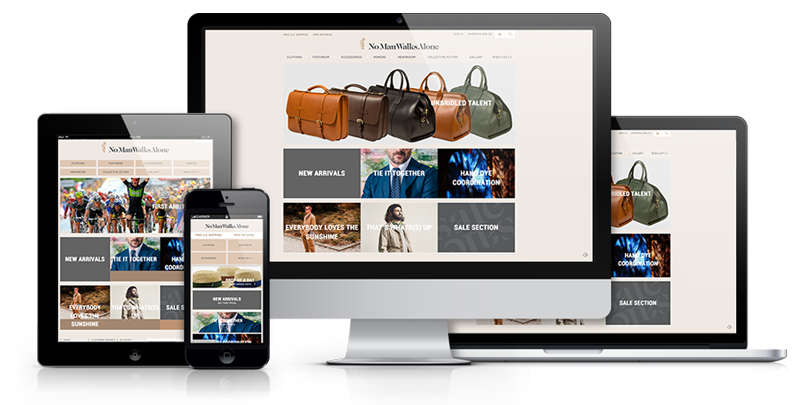How and Why to Sell your products Online using an Ecommerce website.
Firstly, The Growth of E-commerce. A GlobalData report shows e-commerce retail sales are forecasted to increase drastically, from INR 2.8 Trillion in sales in 2018 to a predicted INR 6.3 Trillion by 2023. Another report shows that more than 16% of all retail sales will be spent online.

Why do analysts think that this growth can happen? A few important factors to note:
- Today’s generation which forms a large portion of the retail buying sector, has grown up using variety of eCommerce platforms.
- Gen XYZ and the Baby Boomers are no longer afraid to use their credit cards online. They are very comfortable with – and even prefer – online shopping.
- Most of the population carries the digital world with them. With mobile phones in hand at all times, we can shop anywhere, anytime.
- Social media influences our shopping decisions every day and makes it easy to share products.
- We are now an on-demand society. We want it now and expect convenience.
- Comparison shopping is much easier online (and convenient!) vs. having to travel from one store to another.
- You can’t buy niche products at the neighborhood store. The niche market has a very loyal customer base who will not hesitate to order online, if the facility is made available to them.
Recession = Time to Think & Invest in Growth

Experts say about “not putting all eggs in one basket” but what does that mean during times like this? It means finding new buyers for your products/services, rethinking and refining your current offerings and being creative with how you present your brand in the market.
Examine your current product lines and look for gaps and opportunities. What job is your product filling for your customers? What other jobs do those same customers need filling right now? What new customers can you gain via an online store?
Envision & seize this opportunity to position your business to rebound ahead of your competitors.
Where to Start with an Online Store

- Firstly, Be Realistic with your expectations and Don’t get tensed thinking that you need a very complex, multi-page site with thousands of product offerings matching Flipkart or Amazon. You can start with a simple e-commerce site – with just one- or two-pages, offering a handful of products. You can build upon the site as you grow.
- Technology
If you are technically inclined, determine the eCommerce platform you want to build your shop on. There are many to choose from, such as Magento, WooCommerce, Shopify, Wix, YahooStore and more, or, find a web agency or web developer who has experience in a few platforms and hire them to do it for you.
- Features that you should look out for in your ecommerce store
- Multiple Design Options
- Mobile and tablet compatible layout
- Content Management System to easily and regularly be able to edit products and content on your own
- Search Feature
- Shopping Cart Features
- Pricing and Tax calculation System
- Shipping management and calculations
- Inventory and Order Management
- Payment gateway integration
- Also, plan for what additional features can be integrated in the future, such as email campaigns, live chat and videos.
- Right Branding
Convey the right and crisp message about your product / service and how it can make life easy for your target audience. It’s also important to have a consistent brand look, feel and message for your online store. If you’ve never taken the time to develop your logo and brand look, or you feel your branding is outdated, now is the time to get it done!
Don’t stop at your online store! Carry your branding across to your packaging and package inserts, which are a great way to create a unique buying experience. Use inserts to show how to use a product or to cross-sell other products. Professional packaging signals high quality and allows you to engage with your audience and build excitement.
- Content
The content of your website should use the language and lingo of your customers and industry. Here are key elements to have within your website to help you sell:
- A ‘Rich’ Landing Home Page. Your home page is where most of your traffic will land, so use the real estate well. Include clear images and messages/offers, so customers can ‘see’ the product(s) in action. Also, provide a unique selling proposition. Include a section for your most popular products and a section for latest offers, items on Sale or Deals of the day.
- Product Descriptions. Ensure you are giving descriptive and precise information about the product you are selling on your online store. Answer “how is the customer going to benefit from owning this?” when writing the descriptions. Also include multiple pictures and if possible, videos too!
- Why Buy From Us? Tell your brand story and brand USP. Why should someone choose you over other competitors?
- FAQs. Answer frequently asked questions, related to shipping costs, return policy, sizing, how-tos, etc. that may make it easier for someone to decide and order on your ecommerce portal.
- Advertising and growing traffic
Once you have the ecommerce website up and running, you can get started with Google Adwords or Facebook Ads and start reaching out to your targeted audience qquickly.
Though the online ads are easy to learn and get started, but you may need some help going forward. Initially you can start on your own and once you know your requirements well, you can engage a dedicated digital marketing partner to help you advertise more effectively and start watching your traffic grow gradually. The higher the relevant traffic, they more the sales.
With an online store up and running, you now have oppurtunity to reach new customers across local borders, target the right category of customers via email and social media and position your product/services and make them available 24/7.